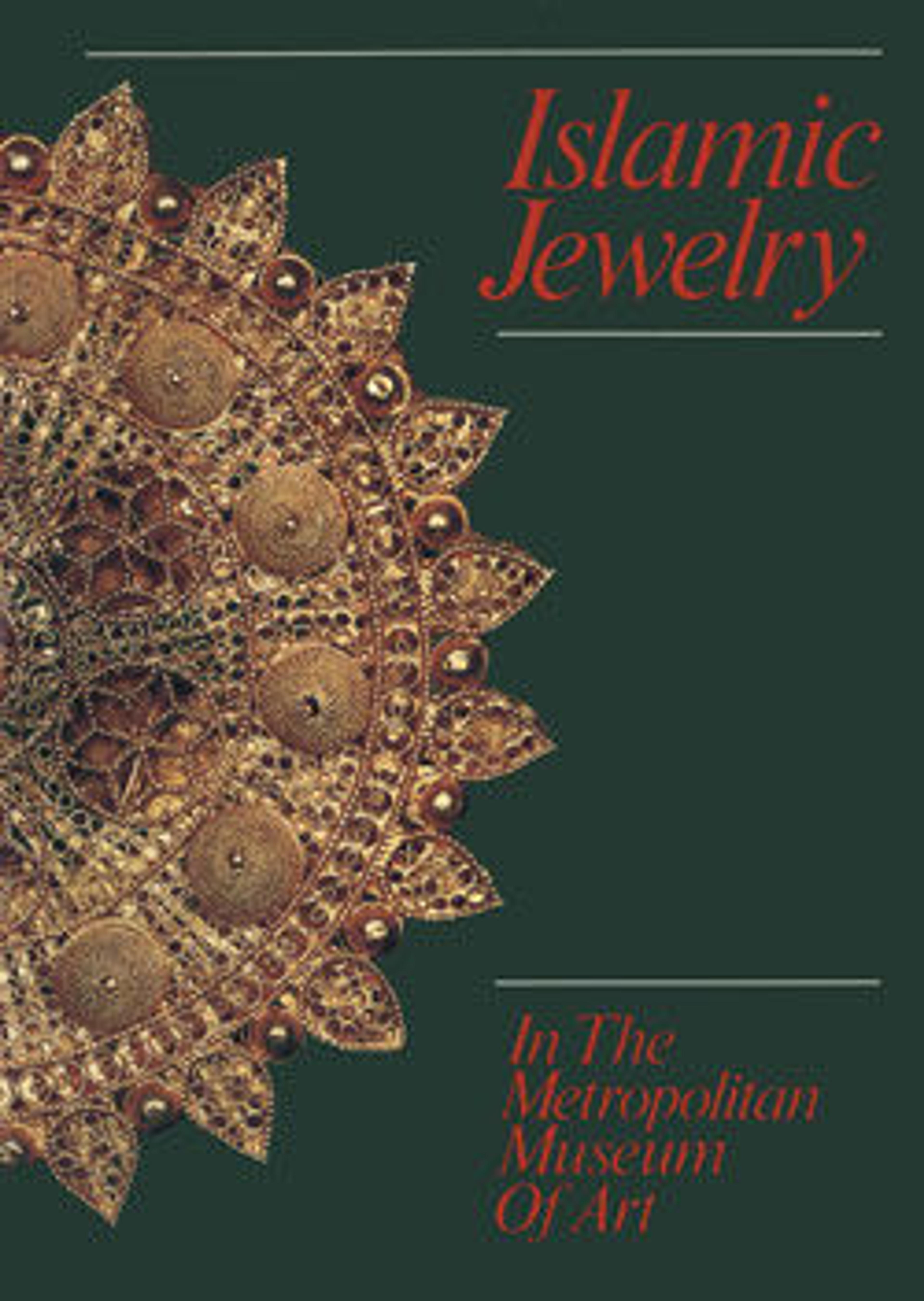Pair of Fibulae
A singular feature of North African Berber costume is the use of the fibula, an ancient article of jewelry that holds capes and other garments in place. Fibulae from the Islamic period consist of two triangular endpieces, which are pinned into the clothing, and a chain that connects them. This piece in silver is an imposing example of a relatively rare type; though there are other examples in the Museum's collection of endpieces with garnets set in enameled bosses, this is much larger than any of these, and the massive double loop-in-loop chain is quite remarkable in effect. The focal areas of the fibula proper are made up of short sections of tubing that have been soldered together. These areas are set off by heavy wire and/or thick strips of sheet on edge. The central bosses–their green, blue, and pale yellow enamel compartments separated by applied twisted wires–are affixed by rivets that run through the center of the triangular elements. Though other classical cultures around the Mediterranean used fibulae, the geometric outline and interior design of this piece are unique to Morocco, and can be found in local textiles as well. In both instances, these designs have talismanic properties and symbolize magic, protection, and good luck.
Artwork Details
- Title:Pair of Fibulae
- Date:19th–early 20th century
- Geography:Made in Morocco
- Medium:Silver, enameled glass
- Dimensions:L. 46 7/16 in. (118 cm)
Greatest width of pendant: 7 11/16 in. (19.5 cm)
Greatest D. 1 in. (2.5 cm) - Classification:Jewelry
- Credit Line:Gift of Marguerite McBey, 1981
- Object Number:1981.5.2
- Curatorial Department: Islamic Art
More Artwork
Research Resources
The Met provides unparalleled resources for research and welcomes an international community of students and scholars. The Met's Open Access API is where creators and researchers can connect to the The Met collection. Open Access data and public domain images are available for unrestricted commercial and noncommercial use without permission or fee.
To request images under copyright and other restrictions, please use this Image Request form.
Feedback
We continue to research and examine historical and cultural context for objects in The Met collection. If you have comments or questions about this object record, please contact us using the form below. The Museum looks forward to receiving your comments.
